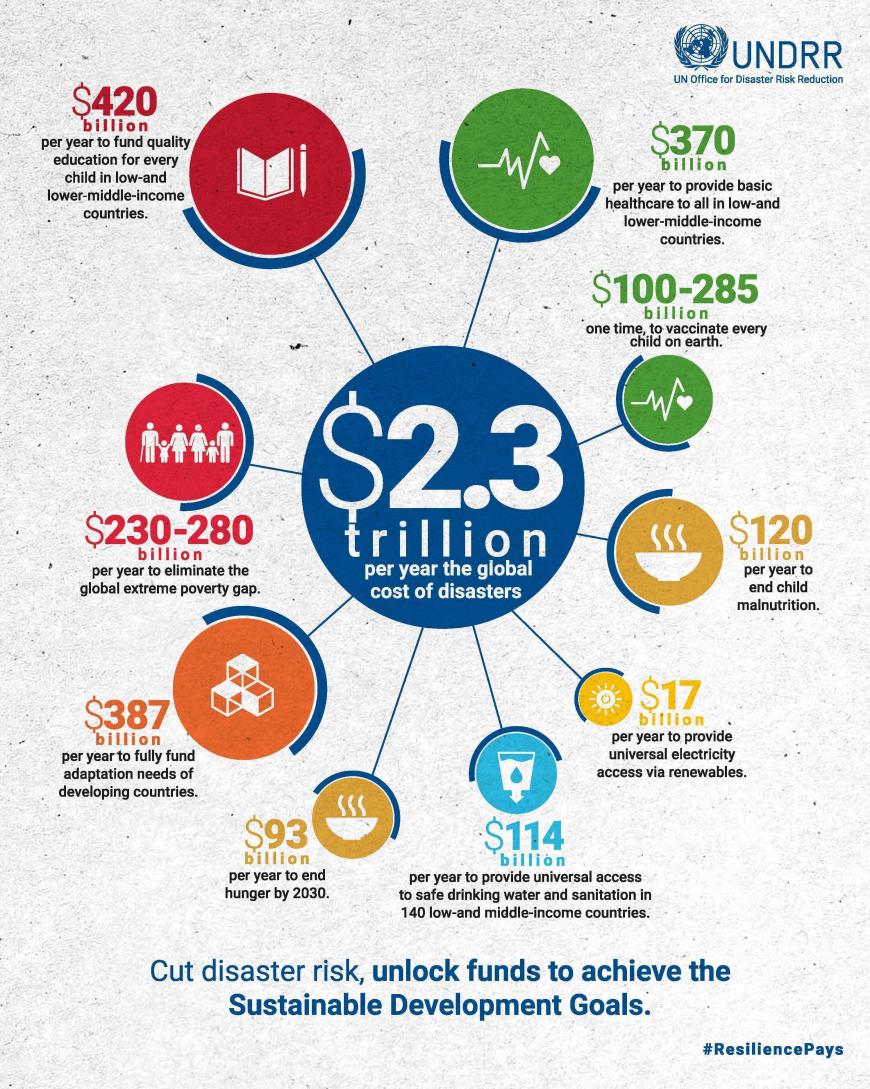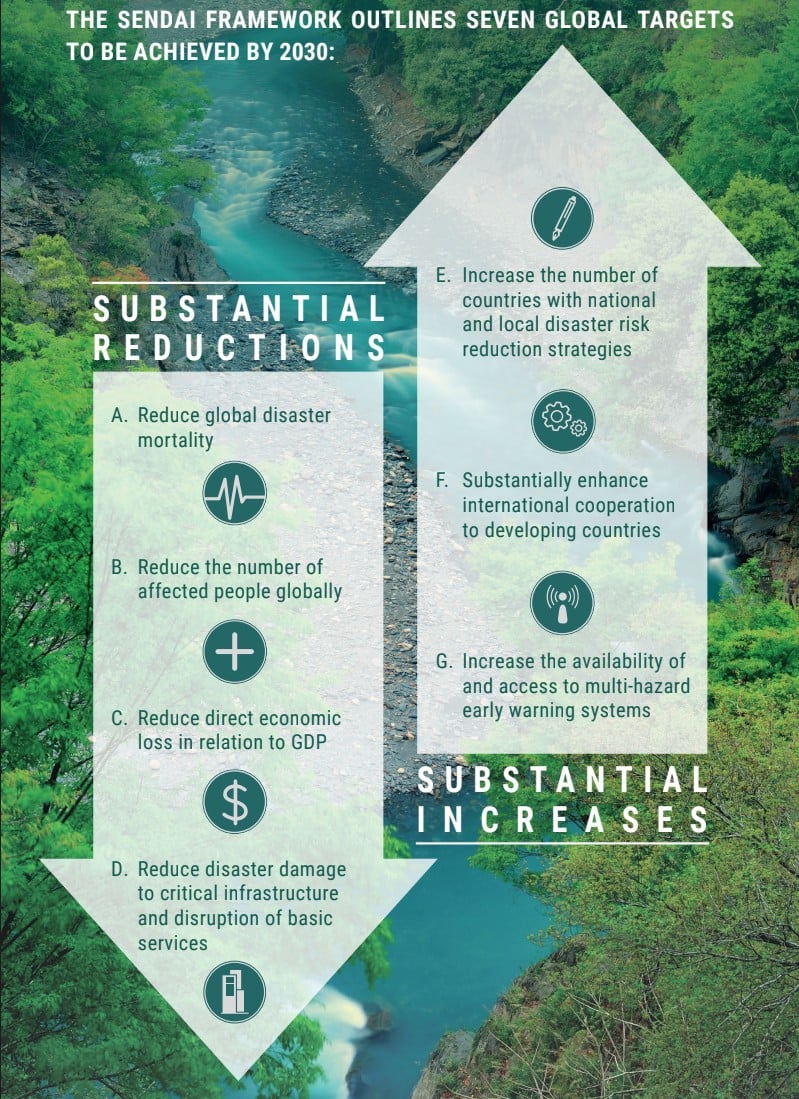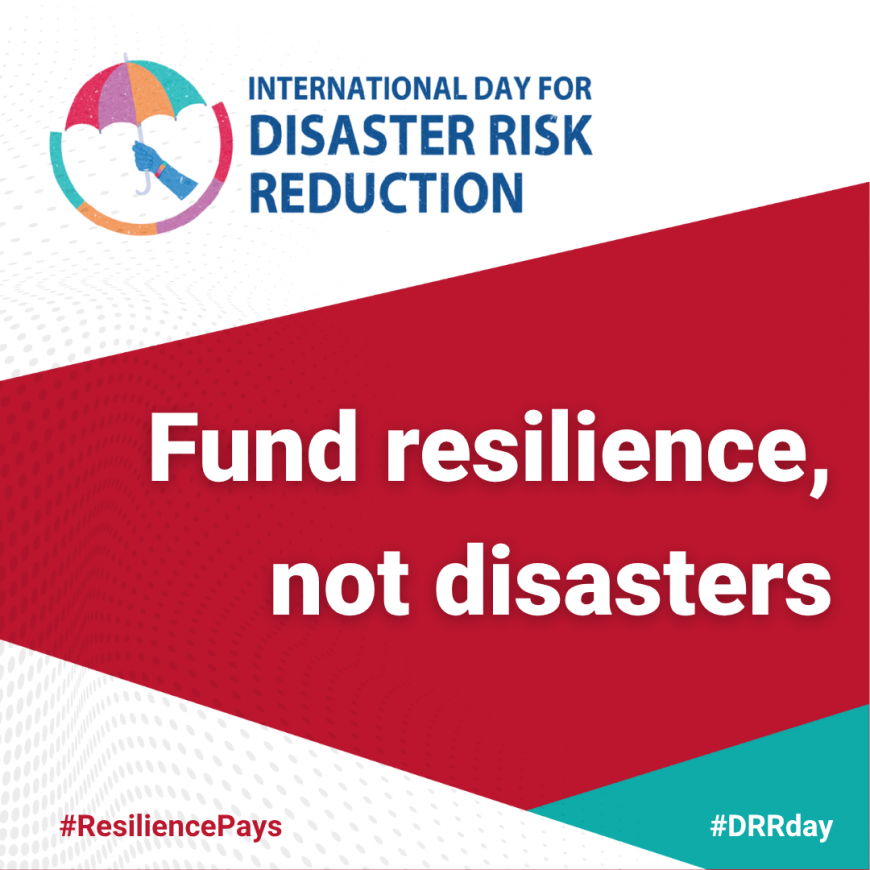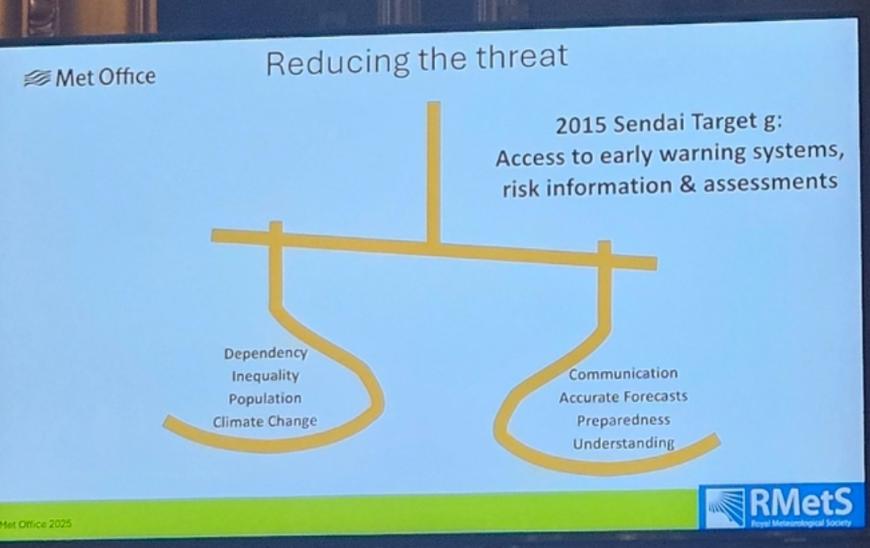
“Join our global call to fund resilience, not disasters! This 13 October, the International Day for Disaster Risk Reduction invites everyone to rethink how we prepare for disasters by investing in prevention before they strike.” UNDRR
The UNDRR (UN Office for Disaster Risk Reduction) gathers partners and coordinates activities to create safer, more resilient communities. Each year, there is a different theme about disaster risk reduction. Theme of the day: Fund resilience, not disasters. This year’s is a call for a shift in focus; from reactive funding after disasters strike to proactive investment and funding preparations.
“Disasters are becoming more frequent, more costly, and more devastating… Financing is the single challenge that unites the disaster, climate, development, and humanitarian domains."

The UNDRR is highlighting that investment in disaster risk reduction is too low in national budgets, and in international assistance. If resilience were better funded now, there would be a reduction in paying for disasters later.
We hear about extreme weather events every week and the devastating impacts. Development decisions around the world are often not risk-informed. This increases the exposure and vulnerability of people and economic assets to a range of hazards.
Global Assessment Report 2025 "Disaster costs now exceed over $2.3 trillion annually when cascading and ecosystem costs are taken into account. Smarter investment can re-set the destructive cycle of disasters, debt, un-insurability and humanitarian need that threatens a climate-changed world."
“At the same time, investments in disaster risk reduction have not kept pace with increasing disaster risks. This was one of the key findings from the Midterm Review of the Sendai Framework for Disaster Risk Reduction, and a reason why many countries have been unable to reduce disaster impacts."
The Sendai Framework for Disaster Risk Reduction 2015-2030 was adopted by UN Member States in Sendai City, Japan. The Framework aims to achieve the substantial reduction of disaster risk and losses in lives, livelihoods and health and in the economic, physical, social, cultural and environmental assets of persons, businesses, communities and countries. The midterm review marked the midpoint of its implementation in 2023.
The Framework goal is “to prevent new, and reduce existing disaster risk through the implementation of various measures that prevent and reduce hazard exposure and vulnerability to disaster, increase preparedness for response and recovery, and thus strengthen resilience.”

The 2025 International Day for Disaster Risk Reduction emphasises the following two key calls to action:
-Increase funding for disaster risk reduction, within public budgets and international assistance.
-Ensure all public development and private sector investments are risk-informed and resilient.
“Countries, rich and poor, are facing disasters that are larger and more destructive. This is partially driven by an increase in extreme weather events, but it is also driven by risk-blind investments, which increase the exposure and vulnerability of people and assets” Kamal Kishore Special Representative of the UN Secretary-General for Disaster Risk Reduction, and Head of the UN Office for Disaster Risk Reduction (UNDRR)

Key Messages
Why invest in resilience?
Disasters bring humanitarian crises, livelihood losses, increased insurance costs and increased debt. This threatens the economy and certainly impacts prosperity or the likelihood of sustainable development. International assistance is in decline so it is critical to invest well to reduce disaster losses. It is a tipping scale, increase the funding and reduce the disaster costs. Development investments should be risk-informed not risk blind.
Examples include - Building houses in flood-prone areas or constructing causeways or bridges without disaster-resilience standards.
Benefits of resilience?
Resilience pays dividends. Early warning systems have been strengthened under the UN “Early Warnings for All” campaign, and it has been found that early warnings, issued within 24 hours of an impending hazard, can reduce the damage by around 30%. Preparation before an event and assisting communities afterwards can make a huge difference.
“It reduces disaster losses, protects development, and reduces humanitarian needs.”
This balance was also highlighted by Prof Brian Golding OBE in his talk to the Royal Meteorological Society in Edinburgh last week about Early Warnings for All. He highlighted that "the facts are clear: early warnings save lives and deliver vast financial benefits. " Yet these warnings had to produce action, or they would be of no use, but that they were saving lives around the world.

How to fund resilience remains a big issue between governments and the private sector. Discussions take place on a global scale.
COP - The United Nations Framework Convention on Climate Change (UNFCCC) was launched in Rio 1992) for a multilateral climate change regime.
Following the principle of “common but differentiated responsibilities,” the regime recognises the obligation of developed countries to lead efforts to reduce greenhouse gas emissions and to provide financial, technological, and capacity-building resources for mitigation and adaptation actions in developing countries.
The regime is built on five pillars: mitigation, adaptation, finance, technology, and capacity building with other issues gaining prominence.

What is the COP?
The UNFCCC launched the Conference of the Parties (COP) as the body responsible for decision-making on the implementation of the commitments adopted by countries to tackle climate change. The COP is attended by all countries that have signed and ratified the Convention. Currently, 198 countries participate in the UNFCCC, making it one of the largest multilateral bodies in the United Nations (UN) system. COP30 will be held on November 10-21, 2025, in Belém, Pará, Brasil.
The COP also serves as the Conference of the Parties to the Kyoto Protocol (CMP) and the Paris Agreement (CMA).
Kyoto Protocol - Adopted in 1997, this outlines individual quantitative emission reduction targets for developed countries. The Protocol required these countries to reduce their emissions by 5% in 2008-2012 compared to 1990 levels.
Paris Agreement was adopted in December 2015 at COP21. The Agreement stresses the principles of the UNFCCC and introduces three goals:
-to keep the global temperature increase well below 2 °C, with efforts to limit it to 1.5 °C
-to strengthen adaptation and resilience capacities; and
-to align financial flows with the other goals of the Agreement.
The Paris Agreement required both developed and developing countries to regularly submit "Nationally Determined Contributions" (NDCs). In the NDCs, each country explains what actions it intends to take to respond to climate change.
The Intergovernmental Panel on Climate Change (IPCC) is the United Nations body for assessing the science related to climate change and links to the World Meteorological Organisation (WMO). It provides policymakers with regular scientific assessments of climate change, its impacts and possible future risks, and to suggest options for adaptation and mitigation. IPCC currently has 195 member countries.
The IPCC, in its assessments, sets out the state of knowledge on climate change, identifies issues that are agreed by the scientific community, and areas where more research is needed. The reports resulting from the IPCC's assessments are key inputs in international negotiations to tackle climate change. These are developed in Working Groups and by a Task Force including many expert voices from around the world.
These are global campaigns, areas of research and collaboration and attempts at significant progress and prevention, in our warming world. More on the International Day for Disaster Risk Reduction
Loading recent activity...